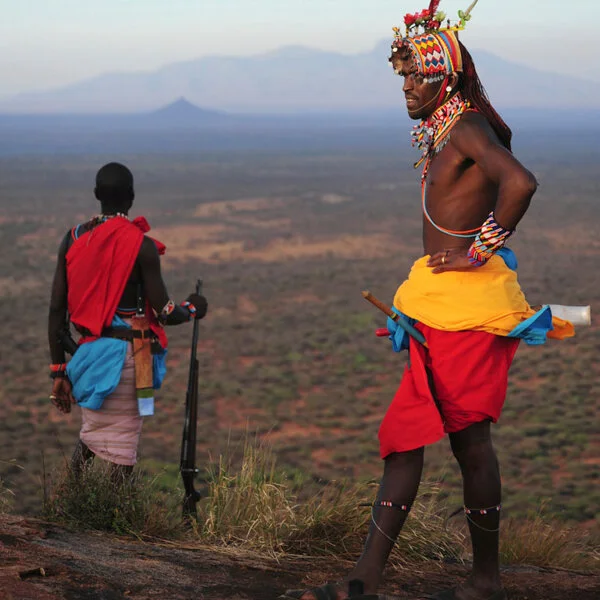5 Night Walking with Camels
- A Cultural Focus
The Lower Ewaso Wilderness
Day 1. In Nanyuki you will be collected from the airstrip after your morning flight and driven across the undulating Acacia country that defines east Laikipia. You will pass inselbergs of ancient granite and gneiss, sweeping views and the some of the area’s rich wildlife. The drive will take about 3 hours and it will pass the Laikipia Masai communities of Kimanjo and Ewaso Town. Descending from these last towns you will be entering a wilderness area that is largely roadless. We call this area the Lower Ewaso Wilderness and as you proceed a sacred peak called Ngai Suisui will come into view. Ngai suisui which means ‘winds of god’ marks the heart of this wilderness area and is in close proximity to the first nights camp.
Day 2: Two nights will be spent here in a comfortable, lightweight tented camp set up in the community conservation area. Arresting views of northern Kenya are caught from every high point in the area while interesting birds and wildlife occupy much of the rugged country that descends towards the Ewaso Nyiro River to the west. A hike down to the river is a great day or morning trip with a stop at the pinnacle one the way. You will learn about animal tracking and perhaps how to follow the Honeyguide to a wild bee hive and raid it like the Laikipia Masai have done for centuries. In the evening take a stroll to a nearby manyatta and watch the livestock return from the day.
Day 3. You might be awoken by the hot water being poured into the handbasin in front of your tent. If not Lesororwa might say “hodi” (knock, knock). Tea, coffee and breakfast will greet you in the mess before a walk up a beautiful river bed to the weekly market that serves the Masai and Samburu local communities. En route, under a shady Acacia you may eat a packed lunch just before or after exploring the market that brims with color, traditional fashions, medicines and livestock.
After the market you and your guide will meet a Karisia car to be driven or to walk back down to a Masai boma (homestead) to spend some time with the families of some of the men working on the safari. While you were at the market the camp will have been moved to a clearing beside the boma. After a rest you might collect water or help with some of the daily life that unfolds such as milking the livestock or the playing the wooden board game, bao. In the evening you can learn some of the songs and dances practiced by the young men and girls as well as the elders.
Day 4: You will wake with activity of the boma to see the early milking and then with the family, walk out with the livestock as they begin their day of browsing. After breakfast you will be collected and taken to Tumaren Camp.
Day 4/5: Tumaren is a lovely tented camp and it has 6 beautiful sleeping tents, solar lighting and running water. Each tent can fit a family of 4/5 if needed or else kept as a double/twin. Guests staying here do walks, camel rides, picnics, go rock climbing and game viewing from the camp and come back to the camp each day. Tumaren is dedicated exclusively to the conservation of wildlife and protects 3000 acres of grasslands and Acacia woodlands for the highest diversity of large mammals in Kenya. Endangered species that use Tumaren include Mt Kenya Hartebeest, Grevy’s Zebra, Reticulated Giraffe, Lion, Cheetah and Wild dog.
Day 6: After an early morning walk, breakfast will be served by the same team that accompanied you on your exploration of the lower Ewaso. After some sad goodbyes a vehicle will bear you off to your next stop on your safari.











